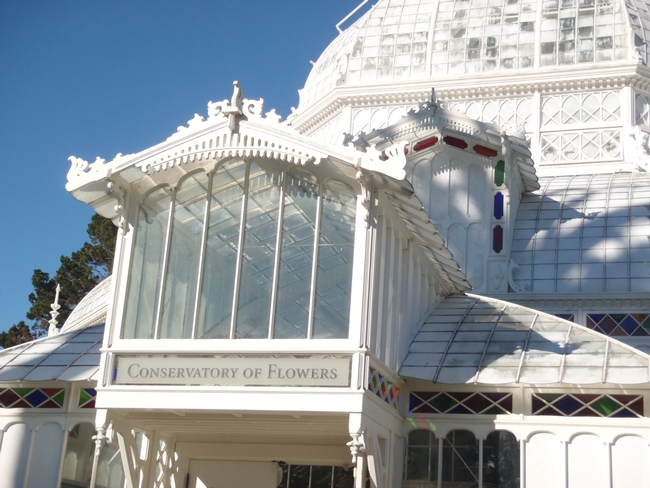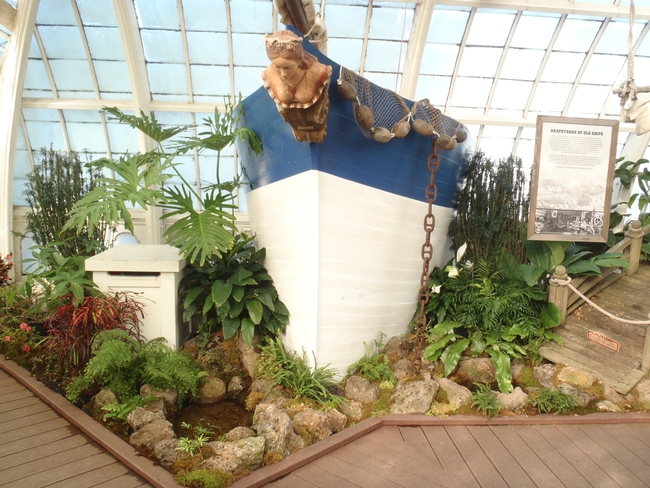- Author: Betty Homer
Recently, I had the good fortune of visiting the latest exhibit featured at the San Francisco Conservatory of Flowers, entitled “Boom Town! Barbary Coast at the Conservatory of Flowers.” I have always found the Conservatory’s exhibits to be creative, well-designed, and carefully thought-out, and this was no exception. This exhibit is located in the Conservatory’s exhibit hall which is a large cozy greenhouse decked out with all manner of plants. Unlike the Conservatory’s last exhibit on “Wicked Plants” (i.e., poisonous plants), the plants in the Boom Town! exhibit are not the star attraction, but rather, provide a lush backdrop to the re-telling of San Francisco’s history of the Barbary Coast (1870s-1880s).
The Barbary Coast covered a 40-square block area in San Francisco, flanked by the Embarcadero, Grant Avenue, Broadway, and Commercial Street. By day, it was a bustling maritime district, where ships docked daily to unload both passengers and cargo to San Francisco. By night, lonely men, intrepid adventurers, and nefarious characters, ventured to the Barbary Coast, seeking an escape from their otherwise hardscrabble lives by patronizing gambling parlors, saloons, opium dens, and brothels.
Although you can take in the entire exhibit the moment you enter into the exhibit hall (it is after all, only one room), the key to enjoying this exhibit is to focus on all the finer details that come into view as you closely examine each display, each object, and each plant. You will find roving trains and cable cars, and miniatures of San Francisco landmarks, both past and present, constructed from recycled and repurposed household materials like cassette tapes. Stare a little longer and you will notice whimsical plastic animals placed in strategic locations to reward and amuse the most attentive of visitors (e.g., disproportionately large plastic squirrels standing on a train station platform).
Although the exhibit is visually enchanting, my favorite part of the exhibit was standing at different stations located throughout the hall and listening to the sounds and recordings from the Barbary Coast era (it is my understanding from reading articles about the exhibit, that actual sounds from that era are used throughout this exhibit). Being both a lover of history and plants, and a native San Franciscan who spent much of her youth traipsing through the area that was formerly the Barbary Coast, I immensely enjoyed how this exhibit brought that period of history, to life, both audibly and visually.
The Conservatory, which is always warm and humid, is the perfect way to spend a cold, rainy afternoon. The exhibit runs from November 16, 2012 to April 14, 2013. For more information, please see http://www.conservatoryofflowers.org/special-events/boomtown-barbary-coast-conservatory-flowers









